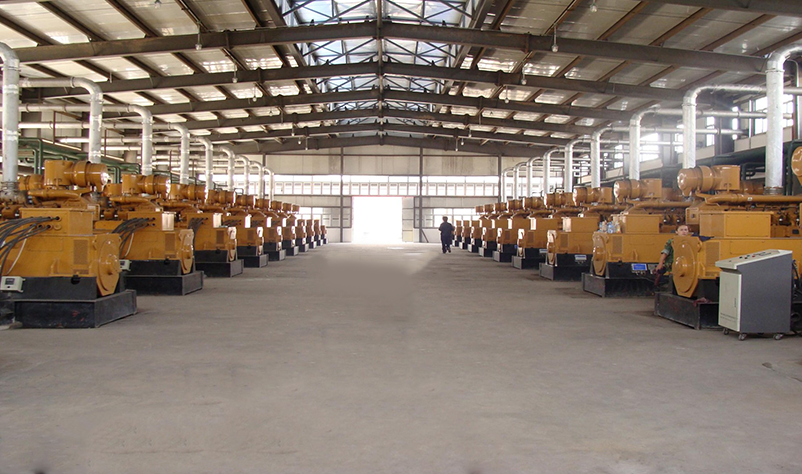瓦斯发电机组工作时间管理:因素与策略
瓦斯发电机组工作时间的科学管理,是保障设备稳定运行、提升发电效率与延长使用寿命的关键,需要从影响因素和管理策略两方面系统规划。
The scientific management of the working time of gas generator sets is the key to ensuring stable operation of equipment, improving power generation efficiency, and extending service life. It requires systematic planning from both influencing factors and management strategies.
影响工作时间的核心因素有四。其一,设备自身特性。不同型号与功率的机组,因核心部件耐用性、散热设计等差异,持续运行能力各不相同。通常大功率机组配备更完善的燃料处理系统,在气源稳定时,理论连续运行时长优于小功率机组,但具体仍受部件耐受度限制。
There are four core factors that affect working hours. Firstly, the characteristics of the device itself. Units of different models and powers have varying levels of sustained operational capability due to differences in core component durability, heat dissipation design, and other factors. Usually, high-power units are equipped with more complete fuel processing systems, and when the gas source is stable, the theoretical continuous operation time is better than that of low-power units, but it is still limited by component tolerance.
其二,燃料供应状况。瓦斯的浓度、流量稳定性及杂质含量是关键。浓度忽高忽低会导致燃烧不稳定,流量不足则难以维持额定功率,而粉尘、硫化物等杂质会加速缸体、气门等部件磨损,直接缩短有效工作时间。
Secondly, the fuel supply situation. The concentration, flow stability, and impurity content of gas are key factors. Sudden fluctuations in concentration can lead to unstable combustion, and insufficient flow can make it difficult to maintain rated power. Impurities such as dust and sulfides can accelerate the wear of components such as cylinder blocks and valves, directly shortening effective working time.
其三,维护保养水平。定期检查与规范保养能显著减少故障停机。日常清洁滤网、检查油路,定期更换火花塞、调整气门间隙,可及时排除隐患。数据显示,坚持规范保养的机组,无故障运行时间比保养缺失的机组长 20%-30%。
Thirdly, the level of maintenance and upkeep. Regular inspection and standardized maintenance can significantly reduce downtime caused by malfunctions. Daily cleaning of the filter screen, inspection of the oil circuit, regular replacement of spark plugs, and adjustment of valve clearances can promptly eliminate potential hazards. Data shows that units that adhere to standardized maintenance have a fault free operation time that is 20% -30% longer than units that lack maintenance.

其四,运行负荷控制。实践表明,机组在 70%-80% 额定负荷下运行最经济:满负荷运行时,部件承受的机械应力与热负荷骤增,易引发过热或磨损;长期低负荷运行则会因燃烧不充分形成积碳,影响进气效率与发电稳定性。
Fourthly, load control during operation. Practice has shown that the unit operates most economically at 70% -80% rated load: when operating at full load, the mechanical stress and thermal load borne by the components suddenly increase, which can easily cause overheating or wear; Long term low load operation will result in carbon deposits due to insufficient combustion, affecting intake efficiency and power generation stability.
对应的管理策略需精准落地。首先,制定弹性运行计划,结合用电高峰低谷与瓦斯气源波动调整启停,例如在气源充足时满负荷发电,气源紧张时段适当降载,并预留固定停机窗口用于维护,避免因抢发电忽略保养。
The corresponding management strategy needs to be accurately implemented. Firstly, develop a flexible operation plan and adjust the start and stop based on the peak and valley of electricity consumption and fluctuations in gas sources. For example, when the gas source is sufficient, generate electricity at full load, reduce the load appropriately during periods of gas source shortage, and reserve a fixed shutdown window for maintenance to avoid neglecting maintenance due to power generation rush.
其次,强化燃料供应链管理。与气源方建立实时沟通机制,提前预判浓度与流量变化;配套高效预处理系统,通过脱硫、除尘、脱水净化瓦斯,同时设置储气装置,在气源短期中断时保障机组平稳过渡。
Secondly, strengthen fuel supply chain management. Establish a real-time communication mechanism with the gas source to anticipate changes in concentration and flow rate in advance; Equipped with an efficient pre-treatment system, the gas is purified through desulfurization, dust removal, and dehydration. At the same time, a gas storage device is installed to ensure a smooth transition of the unit in case of short-term interruption of the gas source.
再者,建立分级保养体系。日常由操作员记录运行参数、清洁设备;定期由专业人员进行部件检测与更换,如每运行 500 小时检查涡轮增压器;建立完整保养档案,通过数据分析优化保养周期。
Furthermore, establish a graded maintenance system. Daily operation parameters and equipment cleaning are recorded by operators; Regular component inspection and replacement by professional personnel, such as checking the turbocharger every 500 hours of operation; Establish a complete maintenance file and optimize the maintenance cycle through data analysis.
最后,引入智能监控系统。通过传感器实时采集转速、温度、瓦斯纯度等数据,超标时自动报警并触发保护机制,如浓度过低时自动降载,油温过高时启动辅助冷却,确保机组在安全范围内持续运行。
Finally, introduce an intelligent monitoring system. Real time data such as speed, temperature, and gas purity are collected through sensors. When the concentration exceeds the standard, an automatic alarm is triggered and a protection mechanism is triggered. For example, when the concentration is too low, the load is automatically reduced, and when the oil temperature is too high, auxiliary cooling is activated to ensure that the unit continues to operate within a safe range.
本文由瓦斯发电机组友情奉献.更多有关的知识请点击://m.gz-yanye.com我们将会对您提出的疑问进行详细的解答,欢迎您登录网站留言.
This article is a friendly contribution from a gas generator set For more information, please click: //m.gz-yanye.com We will provide detailed answers to your questions. You are welcome to log in to our website and leave a message
 在线咨询
在线咨询 官方二维码
官方二维码




 当前位置:
当前位置: 2025.07.09
2025.07.09








